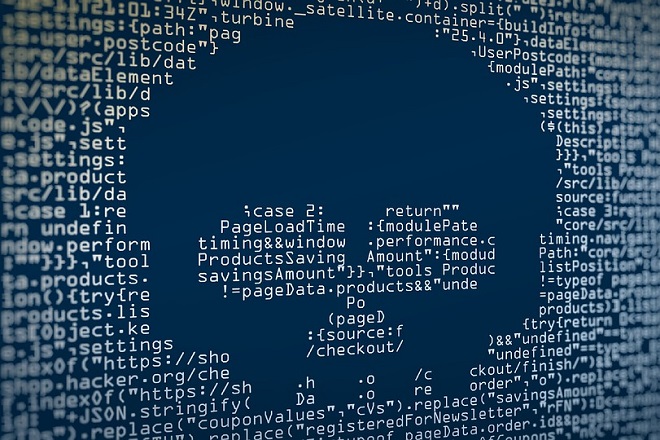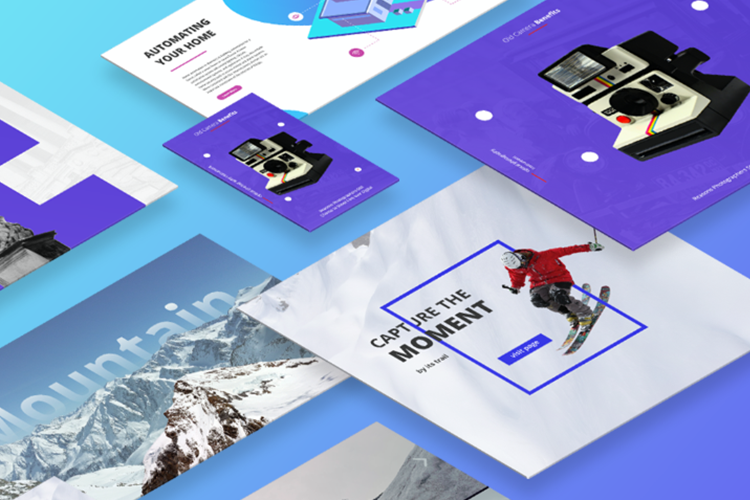With the onset of COVID-19, many companies understood that IT’s future is a source of innovation, not just operations and enablement. Modernization of legacy applications can boost efficiency, reduce costs, or enable innovation, but others do not.
For many enterprises, legacy application modernization must be done only for appearances’ sake to keep up with competitors and avoid looking outdated. As a result, some leaders may jump into the digital transformation process before understanding its value.
So, here, we’ll demystify the complicated landscape of legacy application modernization, its process, benefits and techniques.
What is Legacy application modernization?
Legacy application modernization is a dynamic process of rehosting, re-platforming, or refactoring outdated business technology for modern environments. Instead of focusing on a full rip-and-replace of legacy systems, an application modernization strategy identifies specific challenges, reduces potential disruptions, and fosters innovation. Helping organizations set new goals and achieving them one step at a time can make a big impact.
Modernizing legacy applications works wonders for businesses that want to update and optimize outdated technology systems to achieve agility, boost operational efficiency, address limitations with technology scalability, and attain optimal security.
Why Application Modernization Services Are Important For Any Organization?
With application modernization services, any business can create new value from aging apps by optimizing them using modern capabilities and features. This is an intelligent approach to making older legacy technology systems compatible with newer modern solutions.
However, most leaders don’t understand the full value of application modernization in digital transformation, which tempts them to put minimal effort into the legacy application modernization process.
It should absolutely be taken seriously for many reasons. To make it valuable, we’ll understand the process and the benefits of application modernization through this blog.
BCG reports that only 30% of modernization projects have successfully achieved their objectives, causing confusion among enterprises. However, is that a reason to get frustrated and postpone your modernization plan?
No, not at all. Moreover, many businesses fail because of completely addressable flaws.
Modernizing your old programs typically means rehosting, refactoring, re-platforming, re-architecting, or rebuilding them. These modernization approaches have pros and cons and different costs, risks, and time frames. But how to get started? Let’s figure it out.
Process of Application Modernization
The process of modernization includes many options and approaches that match individual business goals. The most common of these options include rehosting, rewriting, and rebuilding. Each option in this process varies in its speed of implementation and affordability.
Step 1- Find out the Challenge to tackle through Application Modernization
To get your Application Modernization to succeed, it’s really important to start by evaluating current applications, ranking them based on their benefits, costs, and risks, and finding the key areas to tackle through legacy application modernization.
For example- Legacy applications are vulnerable to cyber threats. Their inability to support current security best practices like multi-factor authentication, robust encryption methods, and comprehensive audit trails makes them attractive targets for exploitation. Thus, if a company is looking for application modernization to enhance security, here are the approaches and strategies to proceed with.
Step 2- Analyze The Existing Database
It’s really important to analyze the existing applications, systems, business processes, and databases to proceed. The goal is to know where your data is and which applications use it.
Step 3- Evaluate Application Modernization
Legacy application modernization is a complex business process and needs careful consideration while choosing the five approaches. Each comes with its own levels of difficulties and rewards.
Rehost
Rehosting is the lift and shift approach, which involves relocating a monolithic app from an on-premises environment to the cloud with no modifications. This is known as the quickest approach to moving an application from an on-premise to a cloud environment.
When should you use Rehosting?
When your server is damaged due to bugs or natural disasters, and you need the application up as fast as you can, you decide to move your software to a modern hosting solution.
Refactor
The refactoring approach involves optimization. This approach changes the code structure (restructure) to remove some of the technical debt and legacy software issues, such as outdated libraries, frameworks, code, or incompatible or inefficient features.
When should you use Refactor?
It’s comparatively safer to refactor the legacy code than to any other approach as refactored legacy code is simpler and cleaner. The refactored application is easy to integrate with other cloud-based resources and update with new features. Also, the app’s performance will typically improve when we refactor an app. The risk of encountering with new bugs during refactoring is low as no functional changes are made to the app.
Replatform
Replatforming is the process of moving an existing legacy system entirely to a different platform. While the features of the apps remain the same, re-platforming ports the app components to a new platform with minimal changes to the coding.
When should you choose Replatforming?
Replatforming works best when you want to leverage the benefits of newer platforms and technologies, enhance security measures performance, and integrate with other systems seamlessly.
Rehosting, Replatforming, Refactoring. Are these three the same?
The three approaches are often confused with each other because of the slight differences in the strategic application. However, these are different from each other.
Rehosting as an application modernization process involves moving applications and its data from one to another physical environment without significantly changing the underlying code.
Replatforming, on the other hand, involves moving applications and their data to a separate new platform while making all the necessary modifications to improve performance, security, scalability, and other factors.
Refactoring is often chosen when the current platform is outdated, lacks support, or hampers scalability and performance, and the legacy code structure needs to be changed. Refactoring offers a faster time to market, cost efficiency, and the ability to leverage new platform features.
Rebuild
The application rebuilding approach involves reconstructing the components of the app to improve the existing solution. The process involved assessing the gap between the tasks your application can perform vs. what you need to complete now and for the future. The rebuilding approach is a complex process of rethinking business specifications and making changes to the system logic code configurations, where the business requirements remain the same.
When should you choose to rebuild the application?
- When you want to rethink your business model and adjust operations fully
- To reorganize the application, changing how it processes data, its codebase, and its infrastructure.
- To keep the application essence the same while shifting to entirely new software.
Rewrite
Legacy application rewriting is redoing the app’s code from scratch. Rewriting legacy software is far more complex than simply rehosting it, as the development team must first interpret the existing app’s logic.
The approach of rewriting the app involves making changes in specifications and requires the development teams to define the purpose of the business process aligned with the organization and the application itself, even before starting to rewrite the application.
However, despite the mentioned positive improvements in rewriting outcomes, implementing it for legacy software is still considered risky. Most of the time a new system can’t fully replicate the old one because of gaps in the planning stage.
When should you choose the Rewrite approach?
- For resolving performance, high maintenance costs, and inconsistent code issues
- For revising the business process and its efficiency
Step 4 – Analyze and Implement the Approach
A legacy application is a valuable asset regardless of age, so it’s essential to examine the strengths and weaknesses of each component before launching a modernization effort. Here are the factors one can consider to leverage the maximum value of each modernization approach.
- Workload Management
- Architectural efficiency
- Cost Optimization
- Risk Mitigation
- Operations Effectiveness
- Robust Security
Benefits of Legacy App Modernization
The success of any modernization effort in the age of digital disruption will belong to companies that digitize their core businesses, launch new business models, and apply state-of-the-art technologies— activities that are possible only with sophisticated IT architectures and well-coordinated technology teams. Hence, one can’t unsee the amalgamation of human capabilities with the enhancement of the IT infrastructure.
Boosting the technology function’s effectiveness involves synchronizing the operations of new digital and legacy IT teams so that the technology team collaborates effectively on complex, high-value technology projects. Beyond stability and scalability, moving an app platform to the cloud frees business managers from the constraints of hardware resources, enabling the business to move at the speed of innovation it needs to.
Here are all the advantages of legacy app modernization that a business can reap.
Reduced Infrastructure Spend
One of the biggest nightmares in the growing yet competitive landscape is to cope with the growing IT infrastructure costs. Once moved to the cloud, you no longer need to invest in data center costs and capital expenses. So, one of the biggest advantages of application modernization is that it lets you scale capacity and deploy and retire resources dynamically to meet your customer needs during peak seasons without risking overprovisioning unused capacity.
Security
Innovation happens the best when people feel safe about their database and their infrastructure. Application modernization allows you to build loyalty, reduce frustration and risk, and avoid expensive outages or security breaches.
Innovate faster and get future-ready
This is one of the major benefits that woo companies to adopt the modernization approaches at large. In the fast-changing markets, agility is non-negotiable to stay competitive. You can optimize costs, increase reliability, gain customer confidence, and quickly position your company to grab new opportunities. The right technology partner will help you uncover the optimal strategy for your legacy app modernization with a service engagement that leverages intelligent tooling and techniques.
Stay Relevant for years to come
Legacy app modernization and migration into the cloud enable organizations to get the most out of their digital initiatives in technologies like Artificial Intelligence, machine learning, big data, and cloud. It also helps transform your entire IT ecosystem based on current market trends and build a flexible foundation for future innovation.
Application Modernization Techniques
Application modernization is a dynamic process that evolves over time to meet the changing needs of businesses and technology landscapes. However, the process may be difficult for some organizations considering the Inflexible, aging, and poorly integrated IT systems and the risk of heavy data loss. This can be fixed by wisely choosing techniques that enable an organization to protect its investments and refresh its software portfolio, taking advantage of contemporary infrastructure with less cost and time.
Here are some of the techniques used for Application Modernization across industries.
Monolithic to microservices (event-driven)
A monolithic application grows over time and becomes unmanageable, extremely difficult to understand, with high coupling. At the same time, an event-driven architecture is loosely coupled with events and API.
During the legacy application modernization, the monolithic application is converted into an event-driven application to achieve decoupling in a certain way that the data, the interface, and the control logic code are being carried out separately.
- Virtualization to containers – Another technique for successful application modernization is through virtualization to containerization, enabling the app to run a single OS instance with multiple user spaces to isolate processes from one another. Containerization is done to make the app portable so that the same code can run on any device.
- Container to serverless – As a prominent technique used in app modernization, technologies enable cloud users to run containers but outsource the effort of managing the actual servers or computing infrastructure they are running on. Moving from container to serverless works best for cost saving for small applications, as your provider will bill you only for the time your serverless functions spend running.
- Security to DevSecOps – Another technique for application modernization is integrating the DevSecOps practice throughout the DevOps cycle, unlike running the testing at the time of deployment, which happened in the earlier development processes. By implementing the DevSecOps practice, one can ensure security testing at every stage of the software development process.
- Agile to DevOps – Legacy application modernization is done with the DevOps mindset to foster collaboration between development and operation teams. App modernization with DevOps can help businesses stay competitive by increasing agility, improving quality assurance processes, reducing costs associated with manual labor, scaling quickly to meet customer demand, and enabling better collaboration among teams.
In final words
The world of technology is poised to play a new, more strategic role in growth for companies. The move aims to support business value creation through digital initiatives through technology-based business innovation and application modernization.
The key to a successful and innovative application modernization is to consider all options to help identify limitations. Each will have the desired effect with minimum effort and maximum positive impact. Around 80% of legacy applications will be modernized in the next five years, considering that now is the time to modernize your app.






